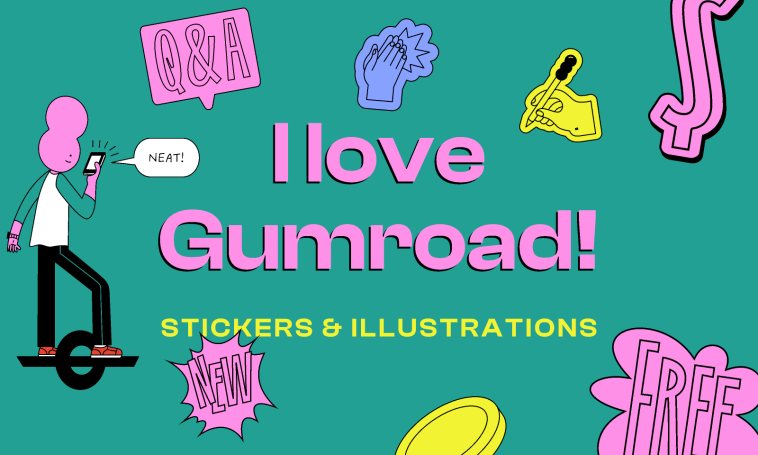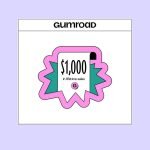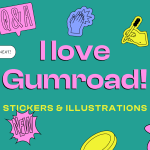If you’re looking to sell digital products online, Gumroad is one of the easiest places to start. It’s simple, affordable, and built for creators who want to share what they know or make without worrying about complex tech setups.
But here’s the truth: having a Gumroad store isn’t enough. If your goal is to make consistent sales, you need to build a store that converts — one that actually convinces visitors to click “Buy.”
That’s what I’ll help you do in this post. I’ll walk you through the practical steps to set up and optimize your Gumroad store so that it not only looks professional but also turns browsers into customers.
Why Your Gumroad Store Design Matters
People make snap judgments online. In just a few seconds, visitors decide whether to trust you or click away. A clean, organized, and persuasive Gumroad store can make all the difference between someone scrolling past your product or pulling out their card.
When someone lands on your page, they’re asking three quick questions:
What are you selling?
Can I trust you?
Is this worth my money?
Your store needs to answer those questions instantly — through your visuals, copy, and layout.
Step 1: Choose a Clear and Catchy Store Name
If you haven’t already, your store name should make it easy for people to know who you are and what you offer. Keep it simple. If you’re a personal brand, use your name (for example, “byjamie.co” or “JohnWrites”).
If you’re building a niche store — say, selling Notion templates or digital art — include that focus in your name. It helps with search and branding.
A name like “Template Hub” or “ArtbyRae” is short, easy to remember, and clear about what visitors can expect.
Step 2: Design a Clean, Trustworthy Storefront
Your Gumroad store design doesn’t need to be flashy — it just needs to feel right.
Here’s what I recommend:
Use a simple banner image: It should reflect your brand — clean typography, soft colors, and maybe your product in context. Avoid clutter.
Add a friendly profile photo: A real face builds trust. If you’re selling under your own name, use a clear headshot.
Write a short, honest bio: This is your elevator pitch. Tell people who you are, what you make, and why it matters. Keep it under two sentences.
Example: “I create simple Notion templates to help freelancers stay organized.”
Remember, clarity beats creativity here. You’re not trying to impress; you’re trying to connect.
Step 3: Craft Product Pages That Sell
Each product page is where conversions happen. Here’s how to make yours work hard for you.
1. Start With a Strong Title
Your product title should tell people exactly what it is. Skip vague names like “The Ultimate Bundle” unless your audience already knows your brand. Instead, use something specific like:
“Freelancer Notion Dashboard”
“Printable Budget Planner for Beginners”
“100 Lightroom Presets for Portrait Photography”
Specific titles build instant understanding — and that leads to more clicks.
2. Use a Clean Product Thumbnail
Your thumbnail acts like a mini billboard. It’s what people see first in your Gumroad store, social posts, or Discover feed.
Make it bold, legible, and relevant. If your product is text-based (like a guide), use a simple cover design. If it’s a digital tool, show a screenshot. Consistency across all your thumbnails helps your store look professional.
3. Write Copy That Speaks to Your Buyer
When writing your description, imagine you’re talking to a friend who’s curious about your product. Keep it conversational. Focus less on features and more on benefits.
Here’s a structure that works:
Start with a short, bold opening line that captures attention.
Explain what problem your product solves.
Describe what’s inside or included.
End with a friendly nudge: “Download it now and start organizing your projects today.”
Formatting helps too — use bullet points, short paragraphs, and line breaks to make it easy to read.
4. Add Social Proof
If you have reviews or testimonials, show them. Even one or two positive comments can build massive trust. You can also include screenshots of happy customer tweets or testimonials from past buyers.
Step 4: Price It Smartly
Pricing can make or break conversions.
If you’re just starting, it’s better to start a little lower, test demand, and then raise your price as your reputation grows.
Gumroad also allows pay-what-you-want pricing, which can be great for digital resources like guides or wallpapers.
But here’s a tip: always set a suggested price — it gives buyers a reference point. For example, “Pay what you want (suggested: $10).”
You can also use psychological pricing — like $9 instead of $10 — but don’t rely on gimmicks. The best way to price is to understand the value your product gives.
Step 5: Optimize for SEO and Discoverability
Your Gumroad store and products can show up on Google and Gumroad Discover, so make sure your descriptions include relevant keywords.
For example, if you’re selling a “Notion Planner for Students,” include related phrases like “college productivity,” “study organization,” and “digital student planner.”
Other quick SEO wins:
Use descriptive file names for your images.
Add relevant tags in Gumroad (up to 5).
Include your product links in your social bios and website.
Step 6: Create a Smooth Buying Experience
Once someone decides to buy, the checkout process should feel effortless. Gumroad already does a great job keeping things simple, but here’s how you can make it even smoother:
Keep your product description short enough that buyers don’t scroll forever.
Use a high-contrast “Buy” button color so it stands out.
Offer a short thank-you message or follow-up note after purchase.
Small touches like these make the buying process feel personal and intentional.
Step 7: Build an Email List Early
Gumroad makes it easy to collect emails automatically when people buy or even when they follow you. Don’t ignore that feature.
You can use email updates to:
Announce new products
Share discounts
Offer free resources
Build community around your work
This is one of the most reliable ways to grow your Gumroad sales long-term — because your email list is something you own.
Step 8: Drive Traffic from the Right Places
Even the best store won’t sell if no one knows it exists. So plan how you’ll bring people to it.
Start simple:
Share your products on Twitter/X, Instagram, or TikTok using short demos or before-and-after shots.
Write helpful content on Medium, Reddit, or LinkedIn related to your product.
Create free mini-products that link back to your paid store.
You don’t need ads or a huge following — just consistency. Over time, the right audience will find you.
Step 9: Analyze and Improve
Once your store is live, check your Gumroad analytics. Look at:
Views vs. purchases (conversion rate)
Traffic sources (where buyers come from)
Refunds or abandoned carts
If your views are high but sales are low, tweak your copy, pricing, or images. One small change — like rewriting your first line or adjusting your thumbnail — can double conversions.
FAQs
Do I need a website before starting on Gumroad?
No, you don’t. Gumroad can be your main storefront. But if you already have a website or blog, linking your Gumroad products there helps with SEO and trust.
Can I sell physical products on Gumroad?
Yes, you can. While Gumroad is built mainly for digital products, it also supports physical items with custom shipping options.
How do I get featured on Gumroad Discover?
Gumroad promotes active sellers with quality listings and good sales history. Keep your store professional, tag your products accurately, and update regularly.
What type of products sell best on Gumroad?
Digital templates, guides, eBooks, online courses, design assets, and audio resources tend to perform well. But ultimately, the best product is one that solves a real problem for a specific audience.
Final Thoughts
Building a Gumroad store that converts isn’t about fancy design or aggressive sales tactics. It’s about clarity, trust, and understanding what your audience needs. Start small, test often, and refine as you go.
You might not see results overnight, but every tweak — every improved title, every clearer thumbnail — gets you closer.
So here’s a question to think about:
If someone lands on your Gumroad page right now, what’s the one thing you’d want them to feel — and how can you make that happen?





GIPHY App Key not set. Please check settings